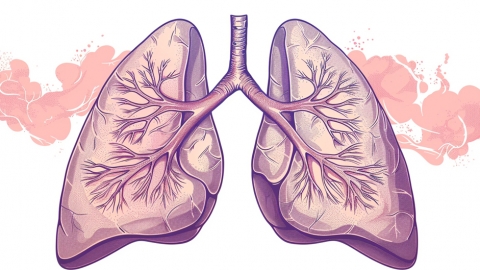What causes wet rales in pulmonary edema?
Pulmonary edema with moist rales may be caused by factors such as excessively rapid intravenous infusion, high-altitude reaction, cardiogenic pulmonary edema, pneumonia, or acute respiratory distress syndrome. Management should be tailored according to the specific cause. It is recommended to seek timely medical attention and receive treatment under the guidance of a physician.

1. Rapid intravenous infusion: If the infusion rate is too fast or the fluid volume is excessive, circulating blood volume can increase sharply, placing extra strain on the heart and leading to pulmonary congestion and subsequent pulmonary edema with moist rales. Immediately stop or slow down the infusion, and have the patient sit upright with legs dangling to reduce venous return and alleviate cardiac load.
2. High-altitude reaction: In high-altitude environments, a rapid ascent reduces oxygen levels, causing pulmonary vasoconstriction and inadequate alveolar ventilation, which may lead to pulmonary edema and moist rales. Supportive treatments are required, including mechanical ventilation and positional adjustments, to maintain respiratory function and oxygenation.
3. Cardiogenic pulmonary edema: Impaired cardiac function due to conditions such as heart failure or myocardial infarction leads to poor circulation and increased pressure in the pulmonary circulation, ultimately resulting in pulmonary edema. Moist rales are one of the typical signs of cardiogenic pulmonary edema. Appropriate oxygen therapy can help relieve symptoms and improve oxygenation.
4. Pneumonia: Infection of the lungs by pathogens such as bacteria or viruses triggers an inflammatory response, causing congestion and edema in the alveoli and lung interstitium, along with abundant inflammatory exudate, leading to pulmonary edema with moist rales. It is recommended to follow medical advice and use medications such as amoxicillin-clavulanate potassium tablets, azithromycin tablets, or ambroxol hydrochloride injection to alleviate symptoms.
5. Acute respiratory distress syndrome (ARDS): Severe infections, trauma, or pulmonary infections can trigger ARDS, damaging the alveolar membrane and increasing capillary permeability, thereby causing pulmonary edema and moist rales. Treatment under medical supervision may include medications such as hydrochlorothiazide tablets, spironolactone tablets, or mannitol injection.
In daily life, individuals should avoid high-altitude environments, reduce cardiac strain, manage underlying medical conditions, regularly monitor disease progression, avoid overeating and excessive fatigue, and maintain healthy lifestyle habits and a balanced diet—key aspects of everyday care for patients with pulmonary edema.








